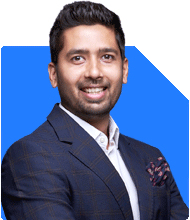I am 29,unmarried with 80k salary. I hv 8 lakhs in real estate,4 lakhs in stocks,planning to invest 40-50k per month. No liability. One term life insurance of 1 cr. May you kindly suggest best possible how to invest for the next 10 years.
Ans: Your situation at age 29 is both strong and promising. With a stable job, no liabilities, and a willingness to invest ?40–50?k monthly, you have a solid base.
Below is an in-depth, structured plan covering all critical angles for the next 10 years.
? Current Financial Position
– Monthly salary is Rs?80,000 take home.
– No loans or liabilities.
– Real estate investment worth Rs?8 lakh.
– Stock holdings total Rs?4 lakh.
– Term insurance of Rs?1 crore.
You have protection and growth—already a strong starting point.
? Wealth Sources
Income
– Your monthly salary is consistent.
– You can direct 50–60% of it to investments.
Assets
– Real estate gives latent value, not monthly yield.
– Stocks bring growth, though fluctuating.
– No dependents now, but goals may change.
Protection
– Term cover ensures family security in emergencies.
? Savings Capacity & Planning
– You plan to invest Rs?40–50?k monthly.
– This is nearly 50–60% of your salary—ideal at this stage.
– But ensure you have liquidity for emergencies.
– Save Rs?3–4 lakh as a buffer in a liquid fund.
– Don’t allocate all savings only to long-term investments.
? Goal Definition
Begin by identifying your goals:
Short term (1–3 years)
– Emergency fund, skill development, travel or lifestyle.
Medium term (4–8 years)
– Marriage, major purchase (car), child planning.
Long term (9–15 years)
– Retirement corpus, child education, wealth growth.
Clear goals help you allocate wisely across timeframes.
? Building an Emergency Fund
– Target Rs?4 lakh as initial emergency corpus.
– Use liquid or ultra-short duration funds.
– This ensures you don’t break long-term investments.
Once achieved, you can increase SIP allocation.
? Asset Allocation Strategy
Divide savings into:
Pure equity
Equity–debt hybrid
Debt funds
Equity
– Choose flexi-cap and large-cap funds.
– Avoid index funds—they don’t offer downside protection.
– Actively managed funds adapt exposures during downturns.
Hybrid
– Multi-asset or balanced advantage funds cushion volatility.
– Good for medium-term goals and withdrawal access.
Debt
– Use short duration or ultra-short funds for predictable returns.
– Suitable for emergency fund and short-term goals.
? Monthly Investment Plan
Assume Rs?45,000 per month to invest.
Suggested split:
– Rs?25,000 into equities via SIP
– Rs?10,000 into hybrid funds
– Rs?10,000 into debt or liquid funds until corpus builds
Step up SIP by 10–15% annually. This combats inflation and builds corpus faster.
? Stocks vs Mutual Funds
You currently have Rs?4 lakh in stocks.
– Direct stocks require active monitoring and carry higher risk.
– Rebalance stocks periodically; consider reallocating part to funds.
Mutual funds offer diversification and professional management.
If you hold direct funds, prefer regular plans via a CFP?backed MFD.
They offer guidance and avoid panic-based exits.
? Mutual Fund Selection
Over 10 years, structure with 5–6 well-chosen funds:
– Flexi-cap equity (growth potential)
– Large-cap equity (stability)
– Multi-asset/hybrid (risk cushion)
– Thematic/sector funds? Avoid for core portfolio.
Key points:
– Choose active funds managed by credible teams.
– Regular plans via MFD help with tracking and rebalancing.
– Direct funds may appeal due to lower cost, but lack advice.
– Periodically re-evaluate fund performance.
If fund underperforms for 2 years, switch via systematic transfer.
? Reviewing Insurance and Protection
You already hold a Rs?1 crore term cover.
Consider the following:
– Does it align with future responsibilities?
– As life changes (marriage, children), cover must increase to Rs?2–3 crore.
– Add health insurance with floater sum of Rs?5 lakh or more.
– Top?ups are cost-effective and increase cover in later years.
Insurance acts as a foundation for wealth-building, not an investment.
? Tax Efficiency & Growth
In investments:
– Use growth option in equity funds, not IDCW.
– Growth option is tax-efficient; payouts trigger LTCG tax only on withdrawal.
Tax implications:
– LTCG above Rs?1.25 lakh in a year taxed at 12.5%.
– STCG taxed at 20%.
– Debt fund gains treated as regular income.
Smart withdrawals and long-term investments lower your tax.
? Liquidity Management
Maintain 6 months of living expenses as liquid buffer.
This protects you from job interruption or sudden emergencies.
Avoid locking all money into illiquid assets like real estate or ULIPs.
? Real Estate Role
Your Rs?8 lakh real estate investment can appreciate gradually.
But it does not contribute to income.
View it as long-term safety net, not core investment.
Focus income goal building via financial assets instead.
? Planning Life Changes
Your marital status may change within the next decade.
Post?marriage financial changes you should plan:
– Joint investment goals
– Bigger insurance cover
– Child planning budgets
– Potential change in income and liabilities
Start preparing financial clarity now. This smooths the transition.
? Review and Tracking
Set periodic review cycles:
– Every six months evaluate your portfolio
– Check if asset allocation stays balanced
– Review SIP performance, risk philosophy, and asset mix
– Make small tweaks rather than big shifts
Regular review prevents drift and improves alignment.
? Why Not Index Funds
You should avoid index funds until retirement phase.
Reasons:
– They don't adjust allocation during market declines
– They just mirror the market—no active risk management
– In a 10-year horizon, equities will fluctuate
– Active funds can reduce downside via fund manager actions
Let actively managed funds guide your journey.
? Avoid Annuities and Insurance Savings
Many new investors consider annuities for safety.
But:
– They offer lower returns
– They lock up funds and reduce flexibility
– You have no income need yet, so better to stay liquid
– Income can be managed via SWP later in life
Focus on growing your corpus now, not locking into annuities.
? Risk Management Over 10 Years
You have high early saving potential. Smart risk control is key.
– Keep emergency fund liquid
– Avoid overexposure to single stocks or sectors
– Stay diversified across asset classes
– Use hybrid funds to balance volatility
– Regularly rebalance asset mix every year
This way you catch up to goals without excessive risk.
? Building Financial Freedom in 10 Years
Goal: Comfortable corpus or monthly income in 10 years.
For example:
– Monthly SIP plus step-ups
– Rental income continues
– Savings in debt/hybrid grow
– Corpus may reach Rs?2.5–3 crore
– This can generate inflation-adjusted income via SWP
With discipline, you set a path for either financial freedom or goal achievement.
? Child Planning and Long-Term Wealth
Even though unmarried now, planning marriage and children will come.
– Start a small separate SIP for future child.
– Choose conservative hybrid funds.
– Don’t treat this as emergency or retirement fund.
Separate tracking gives clarity and prevents misuse.
? Occasional Lifestyle Spending
You deserve leisure and social time at home.
– Dedicate Rs?5,000 to Rs?10,000 per month for social/leisure spending.
– This ensures enjoyment without derailing savings.
– Keep this as a mini “fun” fund.
Balancing lifestyle and savings is key to sustainable discipline.
? Considering Extra Income Streams
Freelancers like you can add passive income layers.
– Upskill in high-demand areas.
– Offer online coaching or consulting.
– Create digital products like e?books, courses.
– Rent part of your real estate space if unused.
Extra income can accelerate your investment goals.
? Final Insights
– Your foundational planning is excellent.
– Now, expand into diversified mutual funds.
– Build emergency and life event funds.
– Reallocate insurance savings from old policies into growth assets.
– Use actively managed funds via CFP-backed regular plans.
– Avoid index funds till later stage.
– Increment SIPs yearly.
– Plan step-wise for marriage, kids, retirement.
– Monitor, track, rebalance semi-annually.
With these steps, you can craft a financially secure life over the next decade and beyond.
Best Regards,
K. Ramalingam, MBA, CFP,
Chief Financial Planner,
www.holisticinvestment.in
https://www.youtube.com/@HolisticInvestment




















